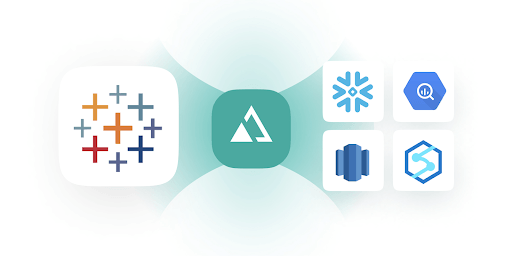AtScale is the leading semantic layer solution for modern business intelligence teams. AtScale insulates data consumers from the complexity of raw data, exposing a business-oriented data model and virtualizing queries that leverage the capabilities of powerful cloud data platforms like Amazon Redshift, Google Big Query, Snowflake, and Databricks. Users access live cloud data through AtScale with no ETL or physical data movement. AtScale delivers the dimensional analysis capability and query performance of traditional OLAP tools (like SSAS) with no practical limitations on the size or physical location of underlying data. Learn more about AtScale below, or read the solution sheet detailing how working together, AtScale and Tableau support self-serve BI for today’s data-driven enterprises.












